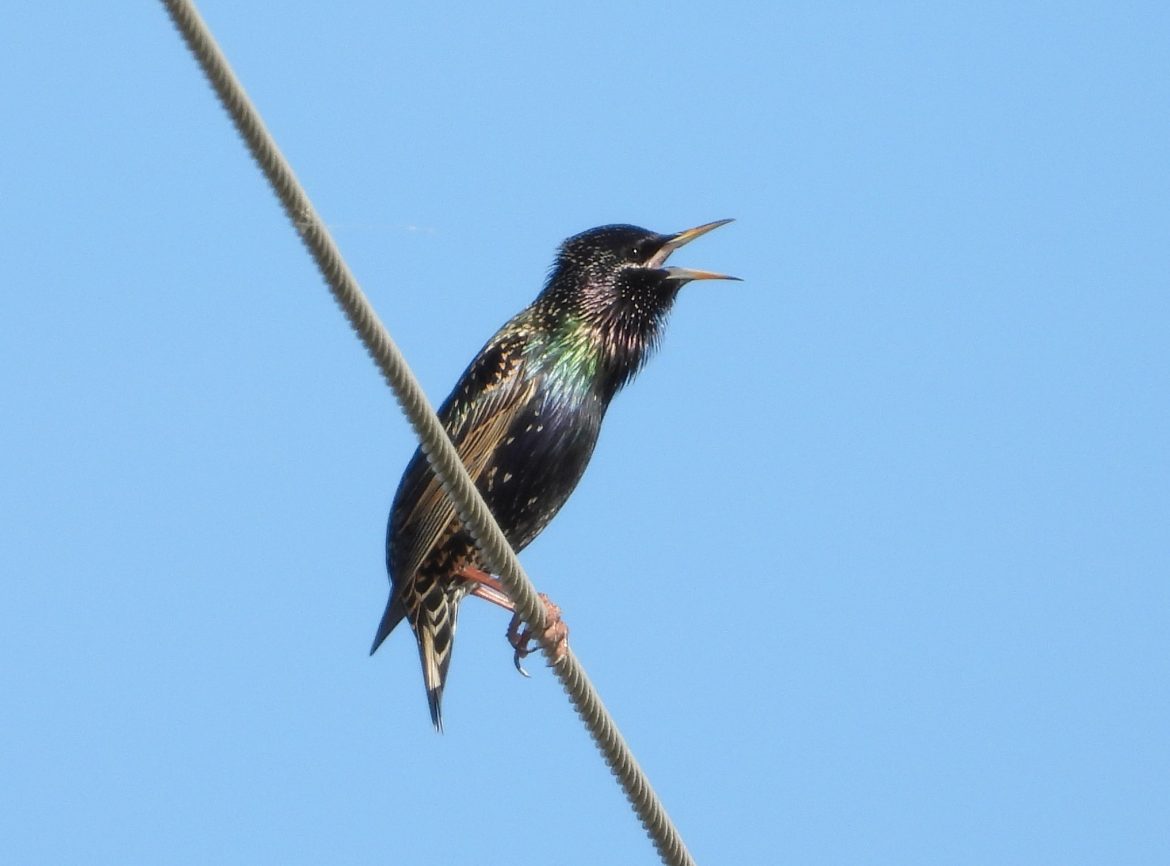By Caleb Clarkson
Around this time of year, when high Texas temperatures finally break into pleasant breezes of somewhat autumnal air, large, ominous flocks of black birds descend on the parking lots of my local H-E-B in Waco, Texas. They line up along the power lines, almost perfectly equidistant from one another, and closely survey their newly claimed spot. They keep an eye out for any scraps of tortilla, kolache, or other foodstuffs that they might eat. Even as the wind blew the lines about, they could balance and maneuver like seasoned tightrope walkers.
It may seem like an impossible feat, but there are many reasons why birds are well-equipped to balance on powerlines. As well, there are some attributes of powerlines that are particularly attractive to birds.
The first evolutionary adaptation that makes birds particularly skilled at balancing on power lines is a special tendon structure in the legs of some birds. Most commonly found in perching birds, the tendon structure automatically tightens a bird’s toes around an object anytime it lands. As it lands, the weight of its body causes its legs to bend underneath it, and as that leg bends more and more, a chain of connective tissues closes the toes tighter and tighter. This allows birds to grip objects with little to no exertion, since the gripping energy first comes from gravity bending a bird’s leg as it perches.
The next secret lies in the bird’s skeleton. Birds are incredibly light and have porous bones that greatly reduce the weight of their skeleton. Because their skeletons are so light, a bird’s weight is distributed more evenly across its body, and the spread of its feathers acts almost like a counterweight, lowering the center of gravity and allowing it to remain stable even on swaying wires. With a bird’s already superb sense of balance and orientation, the low center of gravity makes balancing that much easier, allowing birds to straighten themselves with minimal movement and effort.
But birds don’t just flock to telephone poles and wires to put on a balancing act! Poles and wires offer several perks that make them especially appealing to our feathered gymnasts. One of the biggest draws is elevation. From their high vantage points in the artificially flattened urban world, birds can more easily spot potential food sources (or potential predators).
Being off the ground also protects them from roaming threats like feral cats, dogs, raccoons, and other opportunistic hunters. The clear visibility at this height further facilitates communication and social interaction within flocks. During migration, power lines can even serve as staging grounds, allowing birds to rest and prepare before long journeys, while the lack of obstructions makes it easier for them to take off together in unison. Consistency is another advantage: in urban environments, trees can be sparse or seasonal, but telephone wires are available year-round, offering ample space for many perching birds in a single area.
Urban environments are not the best places for birds to thrive. Constant light, noise, and lack of natural food sources make it a challenging place for wild animals to live. Yet species like grackles, blackbirds, and starlings demonstrate remarkable adaptability to their environments. While the urban environment is drastically different than the environment they evolved in, birds make use of man-made structures to not only survive but also successfully reproduce and establish completely urban populations of birds that continue to grow. For every amazing performance of bird balance you see on a powerline, a bird’s incredible adaptability and years of evolution are on full display.
Photo: European Starlings are often seen sitting on wires
Credit: Celeste Silling

